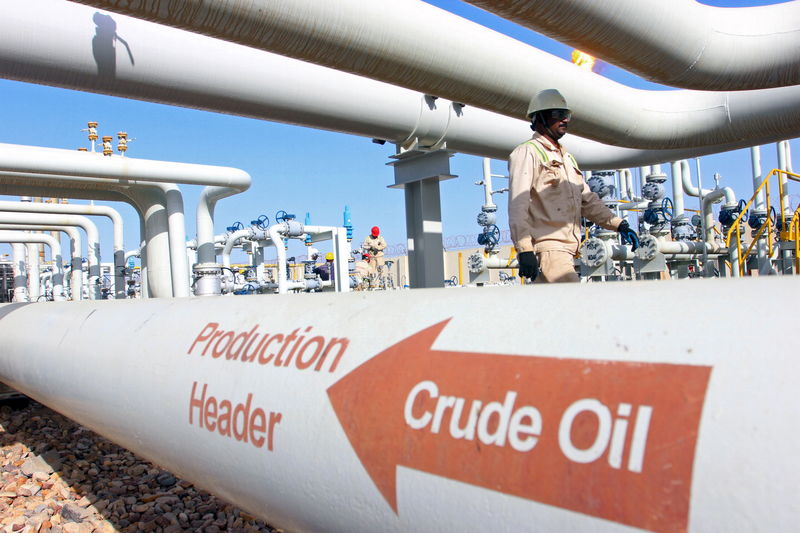Investing.com - Crude oil gained in Asia on Wednesday with geopolitical tensions highlighted as street protests against economic hardships appeared set to continue in Iran and US President Donald Trump tweeted that he too had a "nuclear button" in a warning to North Korean leader Kim Jong-un.
On the New York Mercantile Exchange crude futures for February delivery rose 0.08% to $60.42 a barrel, while on London's Intercontinental Exchange, Brent gained 0.09% to trade at $66.55 a barrel.
On Wednesday, the American Petroleum Institute will report its weekly estimates of US crude and refined product inventories followed by official data from the Energy Information Administration on Thursday.
Initial analyst estimates see a 5.260 million drop in crude, a 1.030 million build in distillates and a 1.864 million gain in gasoline stocks.
Military officials say that a ballistic missile launch by North Korea is possible, if not likely, in the coming days. US intelligence has seen the kind of activity (moving around equipment, etc) that has, in the past, presaged an ICBM launch, according to two officials who requested anonymity.
One official said that a possible launch could happen mid-week. The other official characterized the timeline as the “short-term.”
Iran faces another day of demonstrations in some of the country's most widespread street protests in nearly a decade, with protesters demanding an end to the Islamic Republic regime and a change in leadership.
Overnight, crude oil prices settled lower on Tuesday, as the North Sea Forties pipeline restarted offsetting support from potential supply disruptions in Iran amid ongoing anti-government protests.
Crude oil prices started the year on a sour note as pipelines in the North Sea and Libya reopened offsetting gains on expectations unrest in Iran could spark supply disruptions.
The 450,000 barrel per day (bpd) capacity Forties pipeline system in the North Sea returned to full operations on Dec. 30 after an unplanned shutdown while a Libyan pipelined gradually returned to production after an explosion last week disrupted operations.
The restart of the Fourties pipeline weighed heavily on Brent crude, narrowing the Brent-WTI spread to its lowest in nearly two weeks.
The sharp rise in oil prices, however, has encouraged US shale oil producers to ramp up output raising fears US output could hit record highs of over 10 million bpd in the weeks ahead.
U.S. oil production averaged about 9.6 million barrels per day in 2017, rising 1.8% to 9.64 million barrels a day in October.
Sentiment on oil prices remained bullish despite fears over rising US production as data published by regulators and exchanges showed portfolio managers held a record 1.33 billion barrels of long positions in Brent, WTI, U.S. gasoline and U.S. heating oil during the week ending Dec. 26.
The recent rally in oil prices above the $60 barrel has been largely supported by the OPEC-led output cuts and expectations for growing global demand.
In November, OPEC agreed to extend joint production cuts with Russia of 1.8 million barrels per day through 2018.
